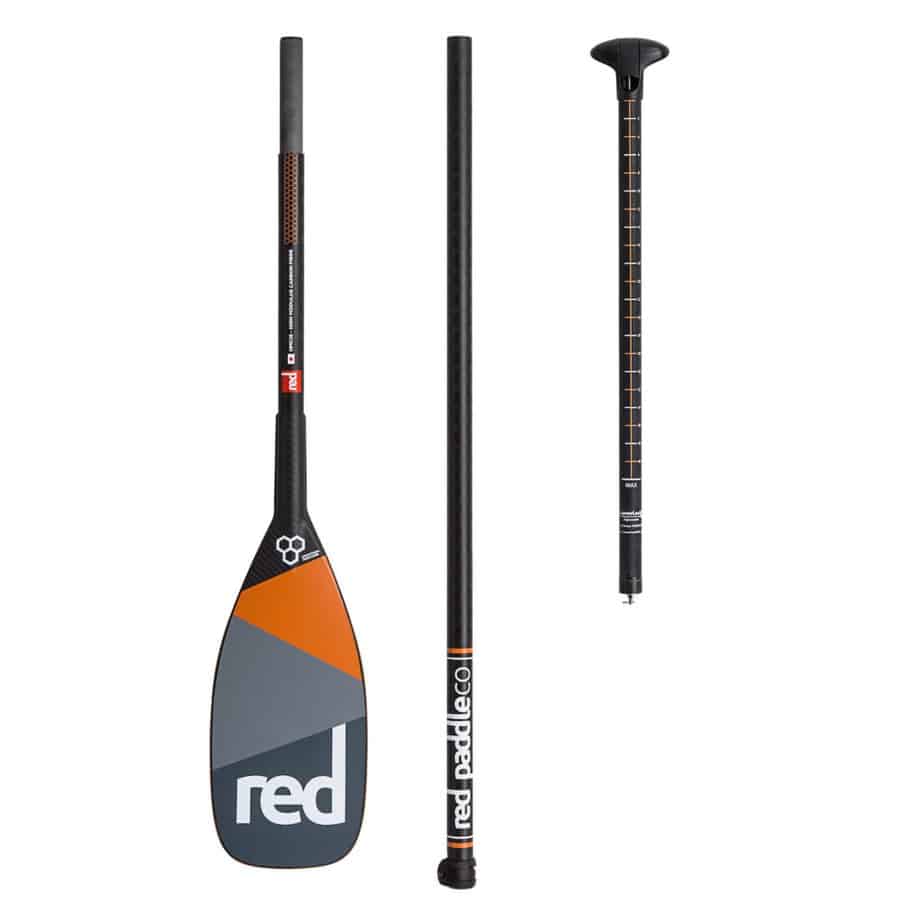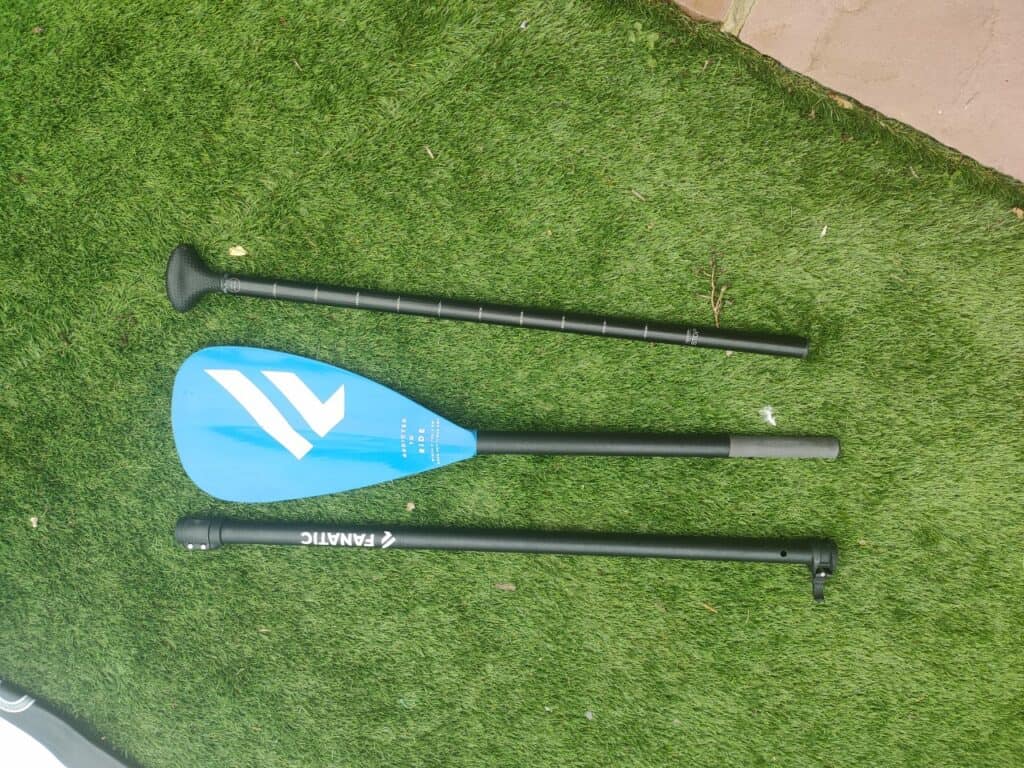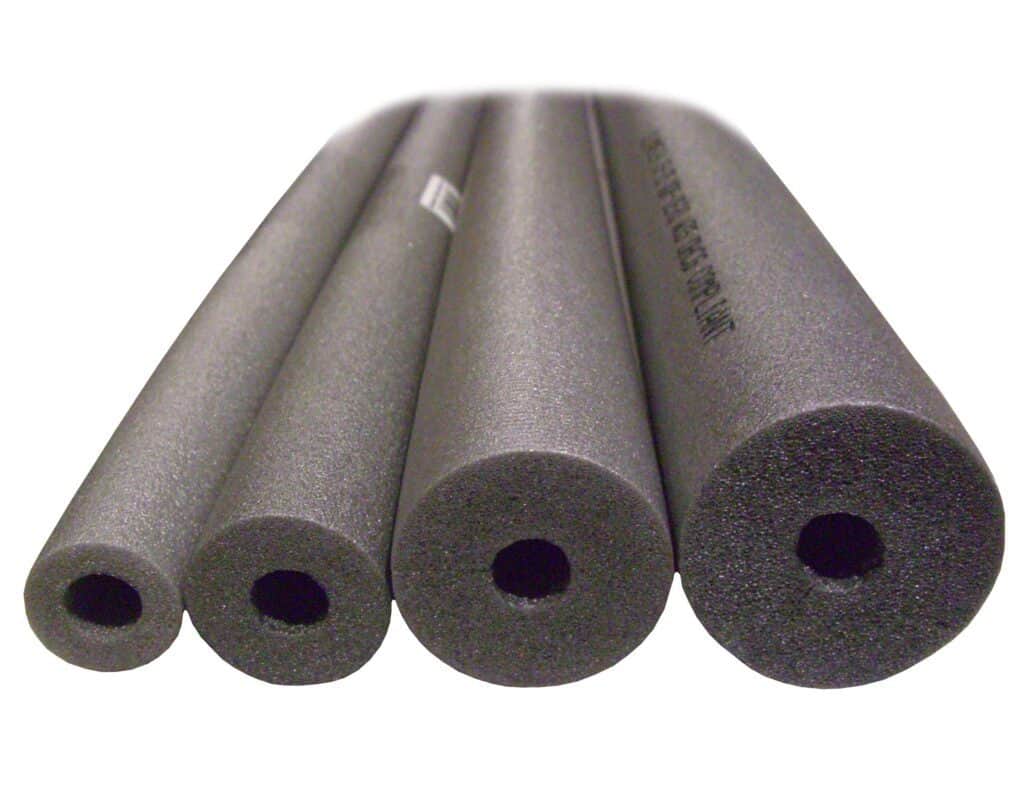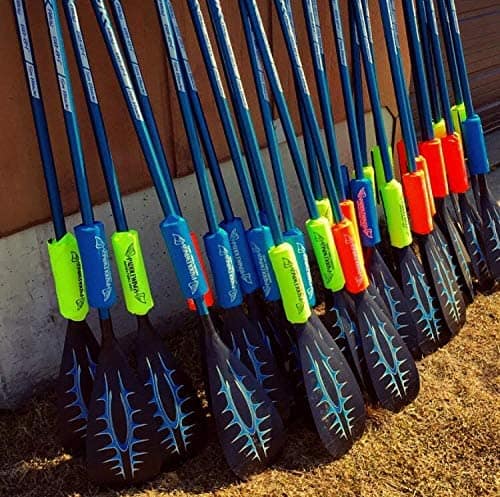When paddle boarding there is a pretty good chance that at some point on your journey you will fall off your board.
When you fall off your board it is not uncommon to lose grip or drop your paddle in the water.

There would be nothing worse than emerging out of the water to find that your paddle has vanished below the icy depths of the water.
You may be wondering if this is actually a valid concern or whether paddles in fact float?
Paddle board paddles, contrary to popular belief don’t all float. If you have a carbon Fiber it will most likely float, if however, your paddle is made of a nylon shaft and plastic blade it will most certainly sink.
Whether your paddle will float or sink is down to a number of factors such as materials used to construct the paddle, whether the paddle is single piece construction or collapsable and lastly whether the manufacturing incorporated anything to ensure it does float.
I expect a bead of sweat has just formed on your brow and you are now panicking about losing a paddle.
Well as said some paddles do float while others won’t.
Let’s have a little look at what paddle construction types will float and which ones won’t
Which Paddle Materials Float
Wood
Wooden paddles are not that commonly seen these days, wooden paddles are still constructed and sold by a number of specialists brands.

Wood in general is not the cheapest material and requires quite a labour intensive process to turn the wood into a paddle that is smoothed down and ready for use.
Wooden paddles are a fantastic option if you want a more original authentic feel when paddling, this is because traditionally speaking nearly all paddles would have been carved and formed out of wood.
Wooden paddles will not generally sink instantly however the longer they are left in water the more moisture that is absorbed.
As the water is absorbed into the wood it causes the paddle to become heavier which ultimately will lead it to sink.
If you have a wooden paddle and you do happen to drop it in the water just make sure you grab and lift out the water in good time and you should be absolutely fine.
Plastic
Plastic paddles are not very commonly seen even in very budget board packages.
Plastic paddles are sometimes sold with kids packages but in adult boards you will often find a hybrid of plastic mixed with another material such as aluminium.
The main reason you don’t see full plastic paddles for adult boards is because as a material it isn’t particularly strong and is subject to breaking, bending or being forced out of shape when put under strain.
Generally speaking they are fine under the pressure a child will apply when paddling however an adult will often apply too much force for a plastic paddle, this is why it is often paired with a stronger material.
Plastic is light and cheap which is why it is commonly used however it isn’t good news when it comes to whether it will float or not.
Generally speaking unless the manufacturer has included a foam core you will want to locate and get hold of your plastic paddle pretty sharpish to ensure it doesn’t start sinking.
Aluminium
Similarly to plastic aluminium is almost never used on its own when it comes to paddle construction.
When you purchase budget packages you will usually see a paddle that has an aluminium shaft with a plastic blade.

This construction is commonly used because it is cost effective, light and generally speaking quite strong.
This often makes it a perfect choice for beginners who are just getting into the sport as it will withstand a beating whilst being cheap and cheerful enough that it’s not such a huge concern if it was to break.
Whilst aluminium doesn’t suffer the issues plastic does regarding breaking, bending etc… it does share the same outcome when it comes to whether or not it will float.
Unless the manufacturer has included some foam inserts or something similar within the shaft to help it float, it will unfortunately sink in the water and rather rapidly at that.
Nylon
At the risk of sounding like a broken record Nylon is again not a product you will ever really see used on it’s own.
Nylon is a special type of plastic that is designed to be much stronger than traditional plastic.
As to whether it not it will float is a very difficult question to answer as nylon is used in both high end paddles and low end budget variations.
Generally speaking nylon being more expensive than traditional plastic means it is more commonly used in mid-top range paddles.
With this in mind you will generally be fine with a paddle that contains nylon.
A good example of this would be the glass/ nylon paddles that are made by more renowned brands such as Redpaddle Co or Gladiator.
If you are still concerned my suggestion would be to check what other materials your paddle is constructed of and then refer back to this section to make an educated decision.
Fiberglass
As we move up the ladder in terms of quality materials we arrive at Fiberglass.
Fiberglass is an extremely common material in a variety of different water sports.
Fiberglass paddles are a fantastic high quality product.
Fiberglass is commonly used to form paddle shafts, this is because the fiberglass is strong and light whilst still allowing a little flexion to assist with paddling.
The fiberglass paddle will often sport a plastic or nylon blade.
If you have a fiberglass paddle you should be absolutely fine when it comes to whether or not it will float.
Fiberglass itself is nice and light and often the paddles will feature a foam or air filled core.
If you have a fiberglass paddle you shouldn’t have any major concerns regarding it sinking.
Carbon Fiber
Carbon fiber is an extremely valuable material thanks to its many benefits.
As I’m sure you are aware Carbon Fiber’s main benefit is how light it is whilst still remaining strong.

Carbon Fiber is so light in fact that it is a common material used when making supercars as it allows them to shed lots of unnecessary weight making them quicker.
The same concept is true when it comes to Carbon Fiber paddles.
Now it is worth noting that obviously as Carbon fiber is a premium product, any paddle constructed of it will carry a premium price tag.
Buyers beware, if you see a paddle that is marketed as containing carbon but seems to be good to be true.
It probably is, it is a bit of an issue in the SUP space at the moment where brands will be sneaky and use as little as 10% carbon.
They will then market them as carbon paddles making you think you got a steal of purchase when in reality you got a very low quality paddle for an inflated price because of a marketing buzzword.
Providing you have got a good quality carbon fiber paddle you will have absolutely no issues regarding the paddle sinking.
Carbon fiber paddles are by the far the best paddle you can buy, they are light, strong and most importantly float.
Of course though they do come with a heavy price tag.
If you need help choosing the right paddle check out my recommended gear page for some buyers advice.
Other Factors That Affect Whether Or Not Your Paddle Will Float
So you may have noticed above that I mentioned that there are many factors which affect whether your paddle will float.
Obviously the material used a big one but there are actually a couple of other key factors.
The first factor is whether or not the manufacturer is included or incorporates something to ensure it does float.
This can be as simply as foam sections pushed into the shaft or if the paddle is a sealed one piece construction it can be air.
This brings me on to the next factor that influences whether or not your paddle will float.
Whether or not your paddle is a one piece single construction or whether it is an adjustable/ collapsible paddle will greatly impact your paddles ability to float.
One of the best ways to ensure something floats on water is to fill it with air, you only have to look at things such as air bands, rubber rings and lilo’s to see this is true.

Obviously if a paddle is one piece construction it is easy to fill the shaft with air to ensure it is able to float, if however, you have a collapsable or adjustable paddle it will be much harder to keep them air tight.
You are relying a lot on the clipping/ locking technology to keep the air inside the shaft which over time as the joins are used more regularly and begin to deteriorate will cause the seal to become less effective.
One way in which manufacturers get around this is by installing foam inserts inside the shaft.
Generally speaking if your collapsible paddle is made up of good materials such as carbon fiber or fiberglass your paddle will float.
If however, your collapsible paddle is nylon, plastic or aluminium it will most definitely sink.
How To Prevent Your Paddle From Sinking
So you have just checked the materials that your paddle is constructed of and it’s not good news.
Don’t worry though not all hope is lost, if you do happen to have a paddle that is constructed of a material not ideal for floating and you think of yourself as particularly clumsy.
Fear not there are a few options available to you.
The first option is a product designed specifically to stop this exact incident from occuring.
This product is a paddle float support.
This paddle float support is extremely simply in design and in concept, the paddle float support is simply a little sheath or sleeve made of foam that sits around the shaft of your paddle.
The sleeve being made of foam is nice and buoyant and therefore will keep your paddle proudly sitting on top of the water rather than slowly disappearing underneath it.
The Paddlewings Paddle Float is extremely cheap and affordable and does a fantastic job of giving you peace of mind that you aren’t going to be stranded out in deep water with no paddle.
If you want to purchase a Paddlewings Paddle Float you can find them on Amazon by clicking the below link.
The next two options I have for you are more DIY/ home made ideas.
The first option is best if you have a collapsible paddle and will not work if you have a one piece construction paddle.
If you can find some foam tubes you can cut them down and slide them up inside the shaft of the paddle, the foam inside the shaft should increase the buoyancy of your paddle.

while it may not save it completely from sinking it should give you ample time to locate it and save it before it’s lost forever.
The last idea I actually got from the days that my brother would take me fishing.
When we would go fishing off of boats, kayaks etc.. he wanted to ensure that if he got a big bite then pulled his rod overboard it would stay afloat.
He also wanted to ensure that should the rod slip when re-baiting etc it wouldn’t be lost to the sea.
To get around this issue we used to buy pipe wrap or pipe lagging and simply cable tie it tight to the rod.
Now I know what you may be thinking, you’re probably thinking this only worked because fishing rods are light.

And while you are right, rods are light, reels on the other hand are not.
In fact some larger reels are considerably more heavy than most paddles.
If you are looking to get peace of mind using things you might have in your garage or just laying around, then definitely give the pipe wrap a go.

